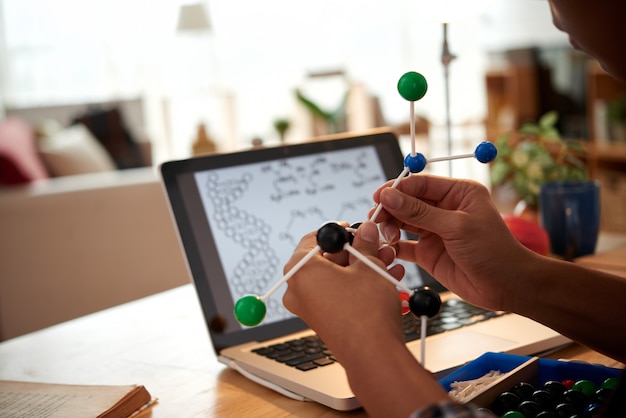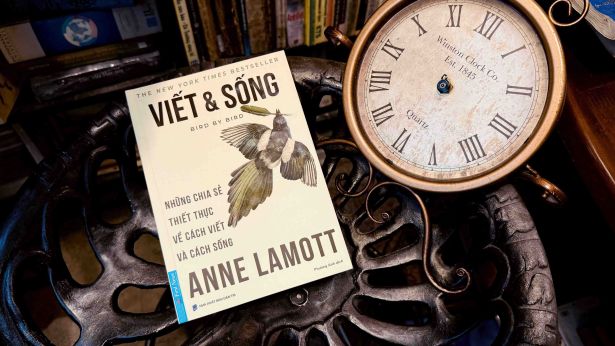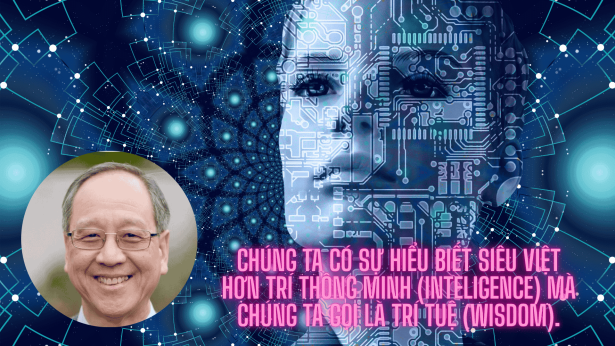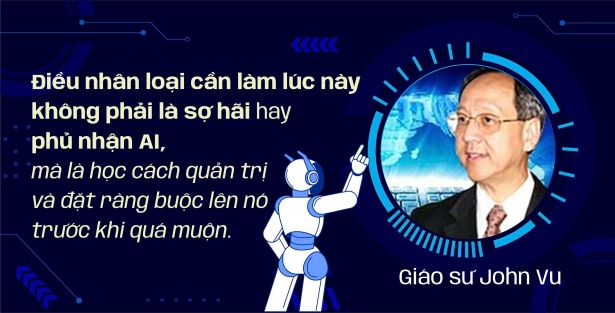 19 May, 2021
19 May, 2021
Phương pháp “Học qua Hành”
Một thầy giáo hỏi: “Tại sao thầy nghĩ “Học qua Hành” là tốt hơn phương pháp đọc bài giảng truyền thống? Làm sao phương pháp “Học qua Hành” có tác dụng với các môn Xã hội học, Lịch sử, Văn học, Kinh doanh, hay Giáo dục?”
Đáp: Trong khi phương pháp “Học qua Hành” có thể không thích hợp cho mọi môn học, nó có thể có tác dụng tốt với một số môn chừng nào thầy giáo hiểu phương pháp này và có khả năng đưa vào một số bài tập thực hành trong hoàn cảnh môn học. Phương pháp này yêu cầu thầy giáo phải cân nhắc cách nó được dùng trong thực hành thực, và cân nhắc những vấn đề lớn hơn mà có thể ở bên ngoài biên giới của nhiều môn truyền thống. Với “Học qua Hành”, sinh viên được dạy về mối quan hệ giữa lí thuyết và thực hành cũng như bản chất của vấn đề và giải pháp, điều phức tạp hơn lí thuyết truyền thống.

Mọi sinh viên đều muốn thấy sự liên quan của nội dung môn học với vấn đề thế giới thực. Họ muốn biết họ có thể làm được gì với tri thức mà họ đã học, cách áp dụng nó và tình huống đời thực, và cách giải quyết vấn đề thực khi nó xảy ra. Áp dụng khái niệm “Học qua Hành” vào trong giáo trình của bạn, bạn cần thiết kế lại môn học với nhiều ví dụ hơn, nhiều trường hợp nghiên cứu, và nhiều câu hỏi cho sinh viên thảo luận. Khái niệm then chốt là hội tụ vào “kết quả học tập” khi chúng cần được xác định. Thầy giáo cần làm cho sinh viên rõ ràng về điều họ có thể mong đợi thu được từ môn học. Về căn bản, “Kết quả học tập” là bạn muốn sinh viên biết cái gì xem như kết quả của việc học môn này? Điều gì mới bạn muốn họ học? Và tại sao bạn muốn họ biết? Ngày nay phương pháp này hấp dẫn hơn cho thế hệ sinh viên mới những người tích cực và hăm hở hơn để có kinh nghiệm học tập khác hơn phương pháp đọc bài giảng truyền thống.
Trong lớp truyền thống, thầy giáo dạy từ sách giáo khoa thường được người quản lí nhà trường trao và tuân theo giáo trình được nhà trường ra lệnh, nhưng trong phương pháp này, thầy giáo thay thế một số sách giáo khoa bằng việc làm thực tế thay vì chỉ đọc sách giáo khoa và ghi nhớ lí thuyết. Thầy giáo xác định sinh viên sẽ được yêu cầu đọc bao nhiêu tài liệu và bao nhiêu giờ thảo luận trên lớp hay thực hành các trường hợp nghiên cứu mà sinh viên sẽ làm. Điều này nghĩa là với vai trò thầy giáo, bạn phải quyết định các kinh nghiệm thực hành nào là thích hợp cho môn học, và được yêu cầu bao nhiêu. Tất nhiên, những hướng dẫn nào đó cần được cung cấp để cho sinh viên có thể theo dõi kĩ lưỡng bằng việc đọc các trường hợp nghiên cứu, phân tích tình huống, và thảo luận giải pháp cũng như “giải pháp thay thế” vì có thể có nhiều giải pháp.

Để thành công, cần đánh giá sinh viên đã học tốt thế nào. Phương pháp “Học qua Hành” gợi ý rằng việc đánh giá nên dựa trên điều sinh viên học từ kinh nghiệm của họ, KHÔNG từ ghi nhớ những câu hay công thức nào đó. Do đó điểm trong lớp nên được xác định bởi việc tham gia của sinh viên bằng việc làm thực tế thay vì chỉ dựa trên việc qua bài kiểm tra. Chẳng hạn, khi học môn “Nhập môn hoá học” sinh viên phải học bảng tuần hoàn nhưng ít người thực sự hiểu cách dùng nó cho nên khái niệm này là mơ hồ. Việc đọc bài giảng truyền thống yêu cầu sinh viên ghi nhớ bảng tuần hoà nhưng ít người hiểu việc áp dụng nó. Bằng việc áp dụng khái niệm “Học qua Hành”, sinh viên có thể phân tích mẫu nước từ sông gần đó dựa trên bảng tuần hoàn. Tương tác thực hành này làm cho bảng tuần hoàn thành sống động hơn, thực hơn vì họ học các hoá chất gây ra ô nhiễm. Kết quả có thể được báo cáo cho tổ chức dùng thông tin này để cải thiện nước sông. Kết quả học tập là nhận diện ra nguyên nhân của ô nhiễm trong sống dựa trên số các hoá chất trong nó. Khía cạnh thực hành này bằng việc lấy mẫu từ sông, phân tích chúng, và thêm chúng vào cơ sở dữ liệu sức khoẻ của chính phủ để cải thiện nước sông và giải quyết vấn đề ô nhiễm.
Về căn bản, trong dạy học KHÔNG có phương pháp hoàn hảo. Là thầy giáo, bạn phải chọn phương pháp nào là thích hợp để giúp sinh viên học tốt nhất và dùng nó. Phương pháp đọc bài giảng truyền thống hay cách tiếp cận “chỉ bảo” vẫn được dùng rộng rãi ngày nay hội tụ vào việc cho chỉ dẫn trực tiếp và tường minh cho sinh viên thay vì để sinh viên khám phá theo cách riêng của họ. Nó dựa trên khái niệm nền tảng rằng tâm trí con người là “tờ giấy trắng” trống rỗng mọi ý tưởng và chỉ thu được tri thức qua các giác quan và kinh nghiệm. Do đó trách nhiệm chính của thầy giáo là rót đầy tâm trí sinh viên bằng tri thức và thông tin theo cách tiếp cận người hướng dẫn (qua đọc bài giảng) và kiểm tra tri thức của họ bằng việc kiểm tra trí nhớ của họ để xác định bao nhiêu thông tin mà họ đã giữ lại được. Họ càng nhớ nhiều càng tốt.
Phương pháp “Học qua Hành” hay cách tiếp cận “xây dựng” không coi rằng tâm trí con người bắt đầu như “tờ giấy trắng” mà tin rằng việc học yêu cầu tích hợp thông tin mới với những niềm tin cũ. Nó dựa trên khái niệm nền tảng rằng mọi sinh viên “đi tới giáo dục chính thức bằng một miền tri thức, kĩ năng, niềm tin và khái niệm có trước, điều gây ảnh hưởng lớn tới điều họ chú ý về môi trường và cách họ tổ chức và diễn giải nó. Do đó tri thức mới phải được xây dựng từ tri thức hiện có.” Thầy giáo cần làm nhiều hơn chỉ cung cấp chỉ bảo trực tiếp cho sinh viên. Thay vì thế, thầy giáo phải chú ý tới việc giải quyết việc nhận thức sai của sinh viên để tạo điều kiện cho quá trình học. Đó là lí do tại sao sinh viên phải học tài liệu trước khi lên lớp và dùng thảo luận trên lớp, tranh luận, các trường hợp nghiên cứu, và thực hành để thách thức các khái niệm rồi làm sáng tỏ khái niệm cho tới khi họ thực sự hiểu rõ khái niệm và đó là cách họ học. Họ KHÔNG học bằng ghi nhớ mà thực sự hiểu mọi lí thuyết, mọi công thức, và biết cách áp dụng nó để giải quyết vấn đề. Kết quả học tập là khả năng của sinh viên áp dụng và giải quyết vấn đề.

—English version—
The “Learning by Doing” method
A teacher asked: “Why do you think the “Learning by Doing” is better than traditional lecturing method? How does the “Learning by Doing” method work with courses like Sociology, History, Literature, Business, or Education?
Answer: While “Learning by Doing” method may not appropriate for every course, it can work well with some courses as long as teacher understand the method and be able to insert some practical exercises into the context of the course. This method requires teachers to consider how it is used in real practice, and consider the larger issues that may be outside the boundaries of many traditional courses. With “Learning by Doing”, students are taught about the relationship between theories and practices as well as the nature of problems and solutions that are more complex than traditional theories.
Every student wants to see the relevance of course content to real-world issues. They want to know what they can do with the knowledge that they have learned, how to apply it in a real life situation, and how to solve the real problem when it happens. To apply the “Learning by Doing” concept into your curriculum, you need to redesign the course with more examples, more case-studies, and more questions for students to discuss. The key concept is to focus on the “learning outcomes” as they need to be defined. Teacher need to make clear to students what they can expect to gain from the course. Basically, “Learning outcomes” are what you want students to know as a result of taking the course? What new thing you want them to learn? And why you want them to know? Today this method is more appealing to a new generation of students who are more active and eager to have a different learning experience than the traditional lecturing method.
In traditional class, teachers teach from textbooks often given by the school administrators and follow the curriculum dictated by the school but in this method, the teacher substitutes some textbooks readings with real case practices and class discussions as students must learn by actual doing instead of just read the textbooks and memorize the theories. The teacher determines how much of the texts students will be required to read and how many hours of class discussion or practice case studies students will do. This means as teacher, you must decide which practical experiences are appropriate for the course, and how much are required. Of course, certain instructions need to be provided so students can thoroughly follow by reading the case studies, analyzing the situation, and discussing the solution as well as “alternative solutions” since there may be more than one solution.
To succeed, it is necessary to evaluate how well students have learned. The “Learning by Doing” method suggests that evaluation should be based on what students learned from their experience, NOT from memorize certain sentences or formula. Therefore the grade in the class should be determined by student’s participation by actual doing rather than just based on passing the test. For example, when taking the “Introduction to Chemistry” course students have to learn the periodic table but few really understand how to use it so the concept is vague. Traditional lecturing requires students to memorize the Periodic tables but few understand the application of it. By applying the “Learning by Doing” concept, students can analyze water samples from a river nearby based on the periodic table. This practical interaction makes the periodic table more alive, more real as they study the chemicals that cause the pollution. The results can be reported to an organization that uses the information to improve the river water. The learning outcome is to identify the causes of pollution in the river based on the amount of chemicals in it. The practical aspect is by taking water samples from the river, analyzed them, and added them to the government’s health database to improve the river water and solve the pollution problem.
Basically, in teaching there is NO perfect method. As teacher, you should select which method that is appropriate to help student to learn best and use it. The traditional lecturing method or “instructionist” approach that is still widely used today focuses on giving direct and explicit instructions to students rather than having students explore on their own. It is based on the fundamental concept that human mind is a “blank paper” void of any ideas and only gains knowledge through senses and experiences. Therefore the main responsibility of teachers is to fill the students’ minds with knowledge and information under the instructionist (By lecture) approach and test their knowledge by testing their memory to determine how much information that they have retained. The more they memorize, the better.
The “Learning by Doing” method or “constructivists” approach do not think that human minds start out as “blank paper” but believe that learning requires the integration of new information with old beliefs. It is based on the fundamental concept that all students “come into formal education with a range of prior knowledge, skills, beliefs, and concepts that significantly influence what they notice about the environment and how they organize and interpret it.” Therefore new knowledge must be constructed from existing knowledge.” Teachers need to do more than just provide direct instructions to the students. Instead, teachers must pay attention to resolve the misconceptions of the students in order to facilitate the learning process. That is why students must learn the materials prior coming to class and use class discussions, debates, case studies, and practice to challenge the concepts then clarify the concepts until they really understand the concept well and that is how they learn. They are NOT learning by memorization but really understand every theory, every formula, and know how to apply it to solve problems. The learning outcomes are the ability of students to apply and solve problem.




 Thông báo
Thông báo














 Quay lại đăng nhập
Quay lại đăng nhập
